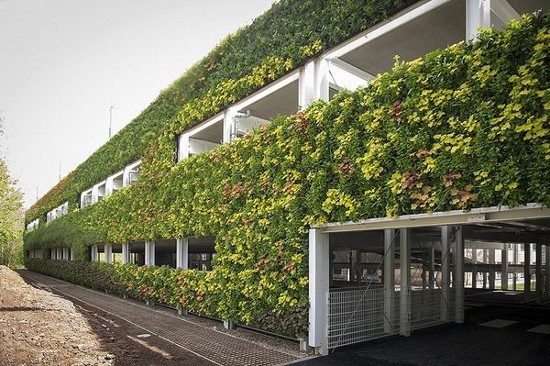Urban air pollution exposure is an ongoing critical challenge for humanity today because the majority of us live in cities. A just-published study in The Lancet Planetary Health reports that 2.5 billion live in urban areas where particulate matter levels exceed World Health Organization (WHO) safety guidelines causing more than 1.8 million attributed deaths annually. The study reports that “the global health burden of ambient fine particulate matter is increasing annually” and is associated with mortality from cardiovascular, respiratory, and lung diseases including cancer. And in terms of chronic diseases, particulate matter in the air contributes to asthma, bronchitis and emphysema, and seen as the leading environmental risk humans face today.
What is particulate matter? The Canadian government defines it as airborne particles that can be solid or liquid. Particulate matter comes from natural and human sources. The natural ones can be seen when volcanoes erupt spewing ash and other aerosols high into the atmosphere. But far more dangerous because of the sheer volume, is human-produced particulate matter coming from smokestacks, tailpipes, power plants, recently tilled fields, tires running across asphalt and concrete roads, and other human activities that release fine particles into the wind. The lighter and smaller the particle, the greater the threat. That’s because fine particulate matter is easier to inhale. It’s also easier to enter the pores of leaves in plants, and easier as liquid aerosols to bind to our buildings and bridges and other infrastructure where its acidic nature causes corrosion.
A particle of 2.5 micrometres (equivalent to 0.00009843 inches) or less is a public health threat. The U.S. Environmental Protection Agency tracks aerosol pollution at this size and on its site notes that particulate matter smaller than 2.5 micrometres has been declining for two decades. The Lancet study contradicts this finding noting that globally levels of airborne particulate matter have changed very little in twenty years. And where’s the greatest rise? In the cities of Southeast Asia.
The Lancet study notes that “85% of urban inhabitants globally lived in urban areas exceeding the 2005 WHO guideline in both 2000 (1·99 billion people) and 2019 (2·5 billion). Only 16% of all urban areas globally ever met 2005 WHO guidelines between 2000 and 2019.” Africa, the Americas, and Europe have been most successful in bringing down aerosol pollutants in cities. But particulate matter concentrations in urban areas globally are still averaging three times the safety threshold established by the WHO. That should have all of us living in cities sitting up and taking notice.
The most common strategy governments employ when urban pollution in the form of smog gets bad is to instruct people to limit outside activity, stay indoors, and keep windows and doors shut.
How effective is this? Not all that effective in the end considering that particulate matter 2.5 micrometres or smaller can find its way into indoor environments where it is as much a threat as it is in the air outside. But cities have the means to reduce dangerous particulate matter levels in the air by implementing a range of strategies that include:
- Reducing the number of fossil-fuel burning vehicles on urban roads.
- Building an electric vehicle and hydrogen fuel cell transportation infrastructure to support alternate transportation choices.
- Investing in electric or hydrogen-powered mass transit to take private vehicles off urban roads.
- Developing non-fossil fuel alternatives to creating electrical energy including solar, wind and geothermal power.
- Constructing distributed energy clusters for multi-residential and commercial buildings heated and cooled by renewable and low-emission alternatives to natural gas.
- Providing funding incentives to homeowners and businesses to do retrofits replacing natural gas with electric heat pumps, passive geothermal, and hydrogen-harvesting electrolyzers.
- Encouraging homeowners to install solar panels on roofs, battery backup systems and power inverters.
- Turning building walls green with climbing plants that clean the air.
- Adding to the urban forest canopy by building more parks and green spaces.
Concerning the last point, an interesting BBC report last year looked at what were the best trees to plant to reduce air pollution. It turned out that botanists and climatologists agreed on evergreen conifers. Why? Because most conifers don’t go into winter hibernation and drop their leaves, the exception in this part of the world being the tamarack or larch. And also, the density of conifer needles makes for a more effective trap for airborne pollutants.
So if you are a city planner out to create new urban forests choose pine and fir over oak and maple. And if you must add deciduous trees to the mix, the BBC quotes one study that says London Plane, Silver Maple and Honey Locust are among the few that can help deal with urban pollutants by screening them from the atmosphere.
And one more bit of advice to city planners like the ones here in Toronto. If expanding our urban forest in the face of snow and ice in the winter, cut down on using road salt to melt things because the trees we need to clean the air are the ones most salt sensitive.

















[…] Read more […]